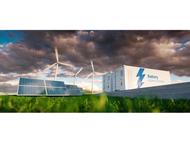
The Energy Collective Group
This group brings together the best thinkers on energy and climate. Join us for smart, insightful posts and conversations about where the energy industry is and where it is going.
Post
Current Storage Deficit - "If you find yourself in a hole, stop digging." - Will Rogers
Current Storage Deficit - ORIGNAL CONTENT
- By:
- Edward A. Reid Jr.
- Posted On:
- Apr 9, 2024 at 6:00 AM
- Category
- Energy Policy, Climate Change
Originally published here.
In a summary of a recent peer-reviewed paper, the principal author stated that an electric grid predominantly powered by intermittent renewables such as wind and solar would require storage approximately equal to 25% of annual generation to be reliable. Other studies have reported similar results (here, here and here).
US wind and solar generation in 2023 totaled approximately 575,000 GWH. Based on the Fekete paper, the US would require a total of approximately 140,000 GWH of electricity storage to render this intermittent generation dispatchable, capable of replacing fossil fueled dispatchable generation. The US currently has approximately 60 GWH of battery storage and approximately 25,000 GWH of pumped hydro storage. This leaves an estimated storage deficit of approximately 115,000 GWH.
The primary battery storage system currently being installed for grid level storage is the Tesla Megapack, which stores 19.3 MWH deliverable at a rate of 4.9 MW over a 4-hour period. Eliminating the current US electricity storage deficit with Tesla Megapacks would require installation of 5,887,347 units at an estimated installed cost of $8,128,870 per unit, for a total installed cost of $48 trillion.
Research suggests that battery life can be extended by operating the batteries between 20% and 80% of full charge. Grid scale batteries would be expected to operate below 20% of full charge very rarely, so the lower limit can essentially be ignored. However, limiting the batteries to a maximum charge of 80%, while maintaining necessary electricity storage would require increasing the installed battery capacity by 25%, at an installed cost of approximately $12 trillion, increasing the total battery system installed cost to approximately $60 trillion. (Note: These costs do not include the land required for installation or the cost of grid connection.)
Tesla reports a roundtrip efficiency of approximately 95% for its Megapacks, significantly higher than the approximate 80% efficiency reported by EIA. NREL estimates current 4-hour battery costs at $500 per kWh, which is projected to drop to approximately $250 per kWh by 2050. The Tesla Megapack stores 19,600 kWh at an installed cost of approximately $415 per kWh.
Wind and solar currently generate approximately 12% of US utility scale electricity. Hydro, biomass and geothermal generate approximately 8%. Nuclear generates approximately 20%. The remaining 60% is generated using fossil fuels. Replacing these fossil fuel generators with dispatchable wind and solar generation plus storage would require installation of wind and solar capable of generating approximately an additional 2,540,000 GWH of electricity and storage capable of storing approximately an additional 630,000 GWH of electricity, preferably with much longer duration storage capability.
With apologies to the late Senator Everett McKinley Dirksen (R, IL);
“A trillion here. A trillion there. Soon you’re talking about real money.”
Get Published - Build a Following
The Energy Central Power Industry Network® is based on one core idea - power industry professionals helping each other and advancing the industry by sharing and learning from each other.
If you have an experience or insight to share or have learned something from a conference or seminar, your peers and colleagues on Energy Central want to hear about it. It's also easy to share a link to an article you've liked or an industry resource that you think would be helpful.























Sign in to Participate